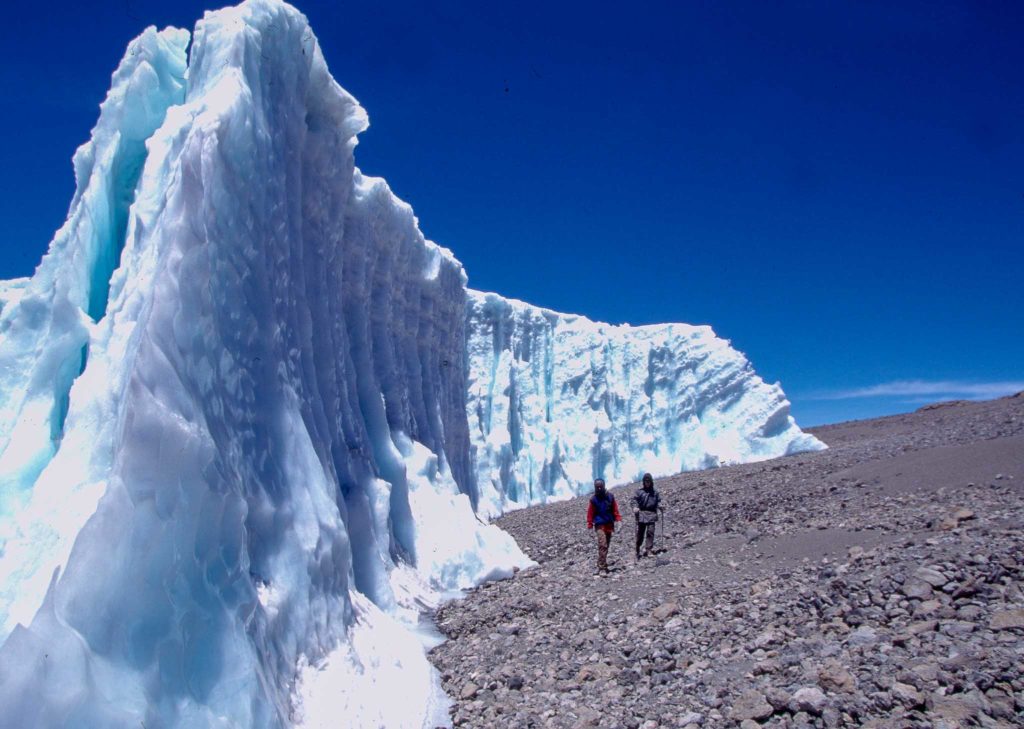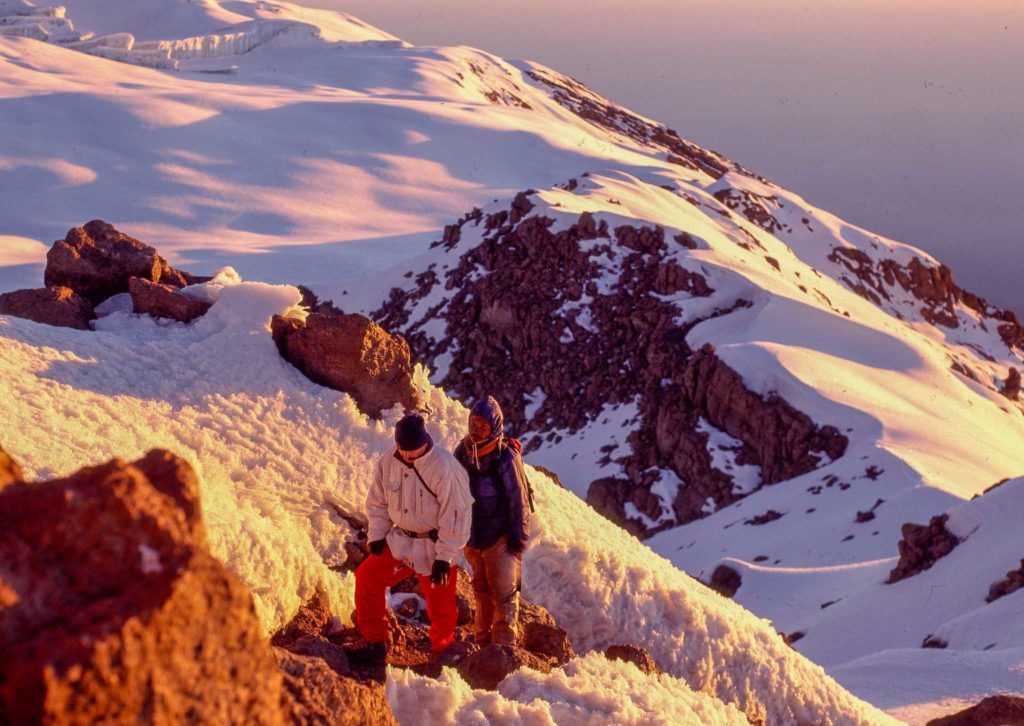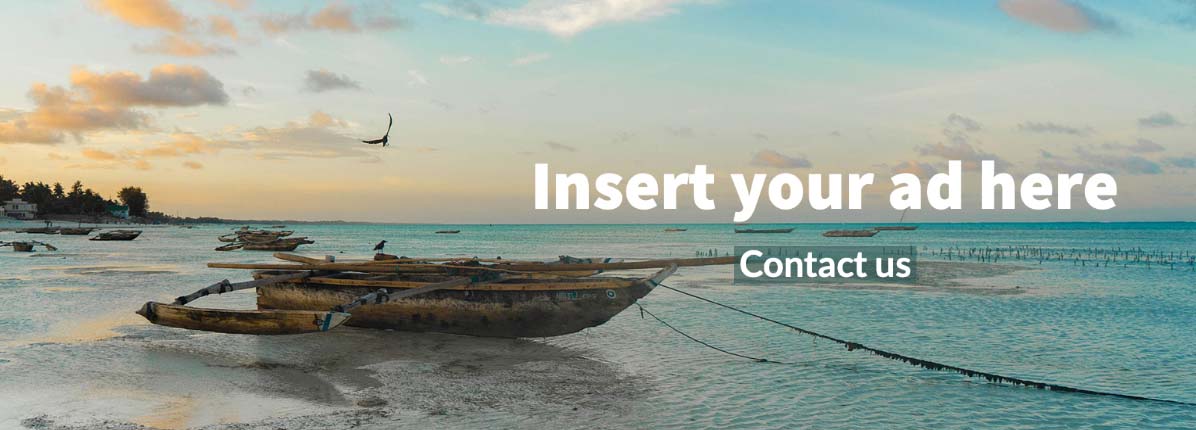Accompanied with a map, professional ice climber William Gadd went to the Kilimanjaro in 2014. He couldn’t believe what he saw: “Nearly all the glaciers were gone. The map was totally inaccurate, almost all the climbing routes had melted.” The Canadian returned last year for a comparison project to see how the existing climbing routes changed. “This was an even bigger shock. A lot of the routes just six years ago were gone as well. Even the famous Messner-route.”’
85% smaller
It might just be the most famous picture of Tanzania: the Kilimanjaro. In front a green yellowish savanna, a few trees, maybe a couple of elephants or giraffes. Further up we find the white peak of Africa’s highest mountain. However, we’ll have to get used to a different sight: this peak will lose its iconic white colors in the next few years.
In the last century (1912-2012) the ice cap on Mount Kilimanjaro decreased with 85 percent, reports an international group of scientists in The Cryosphere. These same scientists projected that in the most favorable scenario all the ice on the mountain will be gone by the year 2060.
The ice is disappearing because of global warming. A difference of just 1,6 degrees has set this in motion. On top of that, there has been less snowfall on the mountain the last two centuries. Usually snow reflects the radiation warmth of the sun, as a protective blanket on the ice. Because of the less amount of snow, more radiation warmth hits the ice cap directly.

Gadd is aware that glaciers worldwide are getting smaller. Even knowing this, his experience in Tanzania hit harder than expected: “Tropical climates are normally more stable. That even here the ice loss is so tremendous really got me thinking.” Since then the athlete is well aware of his carbon footprint: “I almost eat no meat, I drive a fuel efficient car and I buy items that are much more durable. I can’t completely travel without flying because of my job, but when I do fly I try to stay longer on the spot.”
Last-chance tourism
Mount Kilimanjaro is the second most grossing national park of Tanzania, with sixty thousand tourists a year. Number one is the Serengeti. Before all the snow and ice goes away, there is an expected rise in tourism. These are the so-called last-chance tourists that will want to see the mountain in it’s snowy glory. The University of Wageningen investigated the effects and possible solutions for the park once the snow is entirely gone.
Bas Amelung, one of the researchers, explains: “On short term we expect that a lot of tourists will want to see the snow in such a tropical place before it disappears.” After this tourism surge the professor expects a big decline in international tourists. “The park would do best investing in facilities for the growing group of Tanzanian day trippers. For instance picnic spots would be a good addition.”
Far reaching effects
Since the realization kicked in that the ice cap will disappear in the coming years, more research is being done on the local effects. A study of The Nelson Mandela African Institution of Science and Technology from 2019 projects a big shortage of water in the areas surrounding the mountain. This shortage is going to hit agriculture the hardest. In 2050 the sector can expect a water shortage of 71 percent. Also there will be 27 percent less energy won via hydraulic systems on the rivers due to the melting water staying out.

Mountain climbing will get easier
It’s a bit of a grope in the dark, but researcher Amelung suspects that the Kilimanjaro becomes a more popular destination for mountaineers. “The disappearance of snow and ice makes climbing the mountain easier. There will be less snow and cold related dangers. Besides, the rising temperature creates an air pressure change at the top, adding more oxygen into the air. This makes reaching the peak relatively easier to do.” That’s at least something to look forward to.


Recent Comments